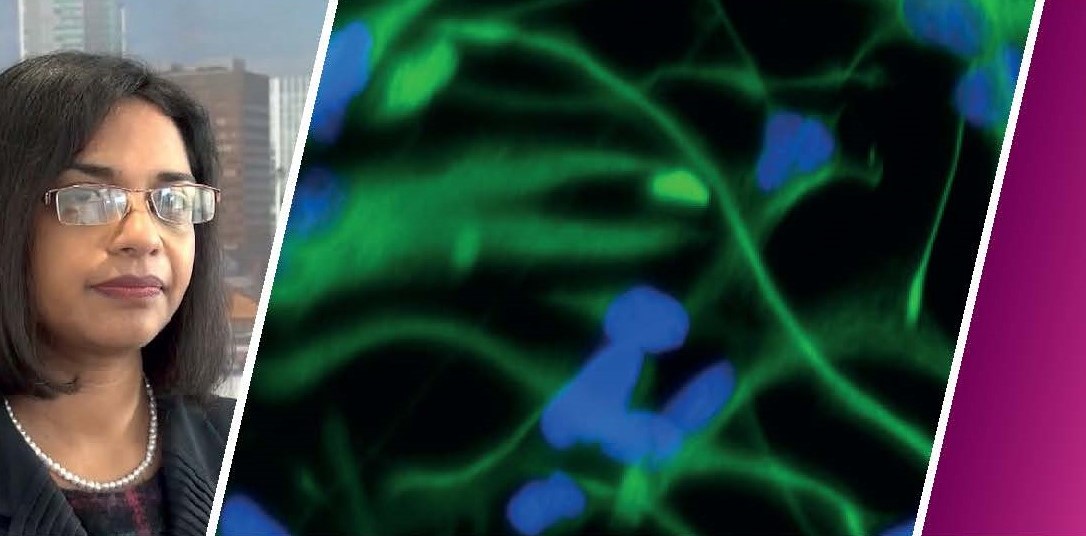Brain cancer research: accelerating discovery and clinical applicability
Since the early 1990s the incidence of cancers of the brain, central nervous system and intracranial tumours has increased by almost a third. Primary brain tumours are the biggest cancer killer of children and people under 40. In terms of the numbers of life years lost, it is the most fatal of all cancers.
The University of Bristol Brain Tumour Research Centre led by Kathreena Kurian, Professor of Neuropathology, works across complementary areas of research, linking Bristol’s ground-breaking research in cancer epidemiology and population health with molecular biology and drug delivery. The centre aims to discover novel risk factors, biomarkers of progression, and drug targets for brain cancer using population health data; use in vitro models and clinical biobanks to screen and validate targets using machine learning; and translate work to in vivo with direct drug delivery into the brain cancer using nanoparticles and nanocarriers.
To date, pre-clinical model systems in brain cancer fail to predict efficacy and adverse effects of novel compounds when tested in clinical trials. This is compounded in the case of brain cancer by problems with drug delivery to the brain cancer, which is hidden behind the blood-brain barrier. Overall, the chance of success from target identification to the approval of a new drug is around four percent, at huge cost. Using world-leading population health expertise in Bristol to select genetically supported targets could double success at 25 percent lower costs. In collaboration with industry and other research partners, validation of targets and testing direct delivery of these to the brain could revolutionise our treatment of brain cancer.
https://www.bristol.ac.uk/translational-healthsciences/research/neurosciences/research/braintumour/
Publications:
- Ghirardello M et al. (2022). Carbon dot-based fluorescent antibody nanoprobes as brain tumour glioblastoma diagnostics. Nanoscale Advances.
- Andrews LJ et al. (2022). Prevalence of BRAFV600 in glioma and use of BRAF Inhibitors in patients with BRAFV600 mutation-positive glioma: systematic review. Neuro-Oncology.

Left: Prof Kathreena Kurian. Right: Attaching a fluorescent marker to affected cells will allow surgeons to identify high-grade tumour cells and remove as much cancer as possible, while leaving normal brain cells intact.